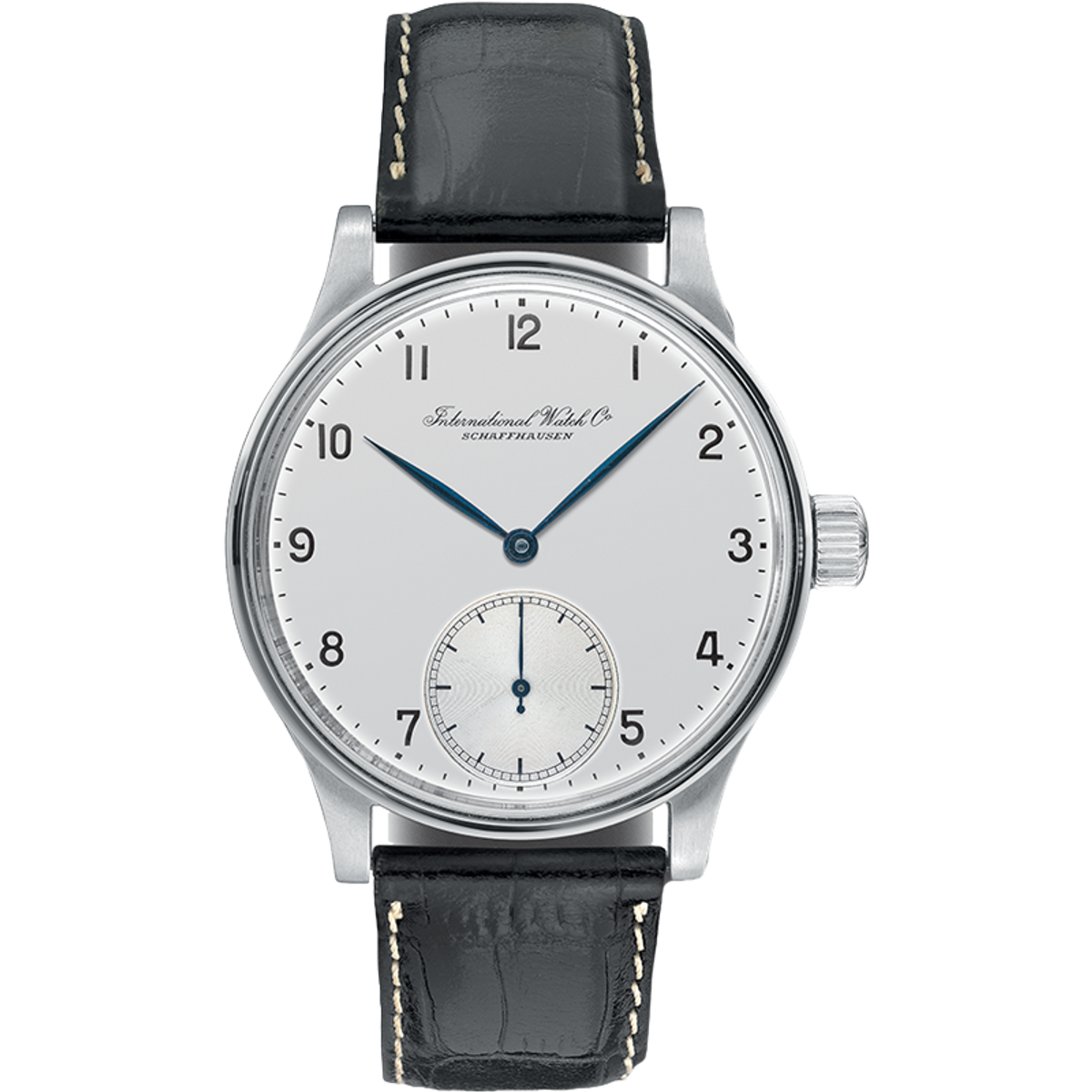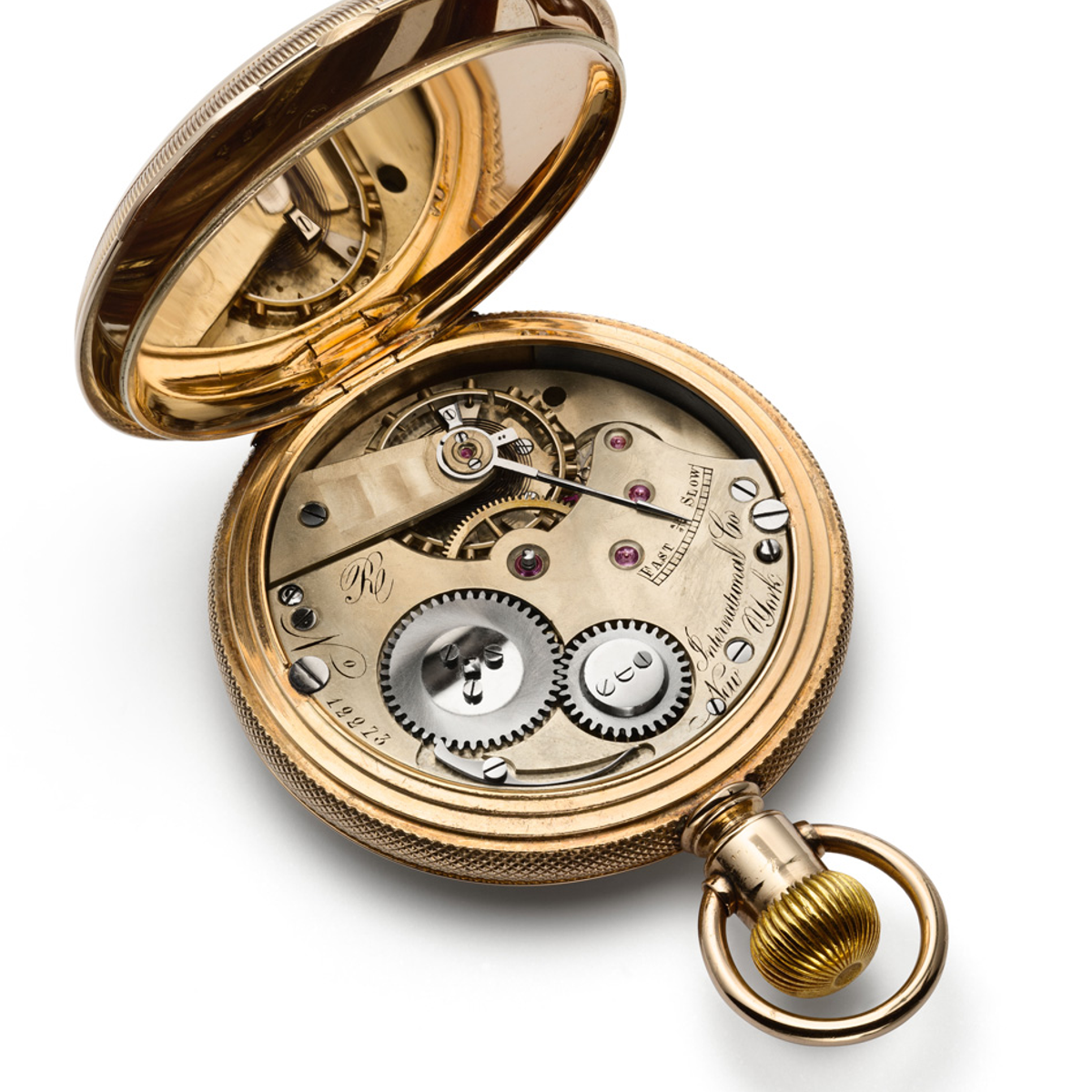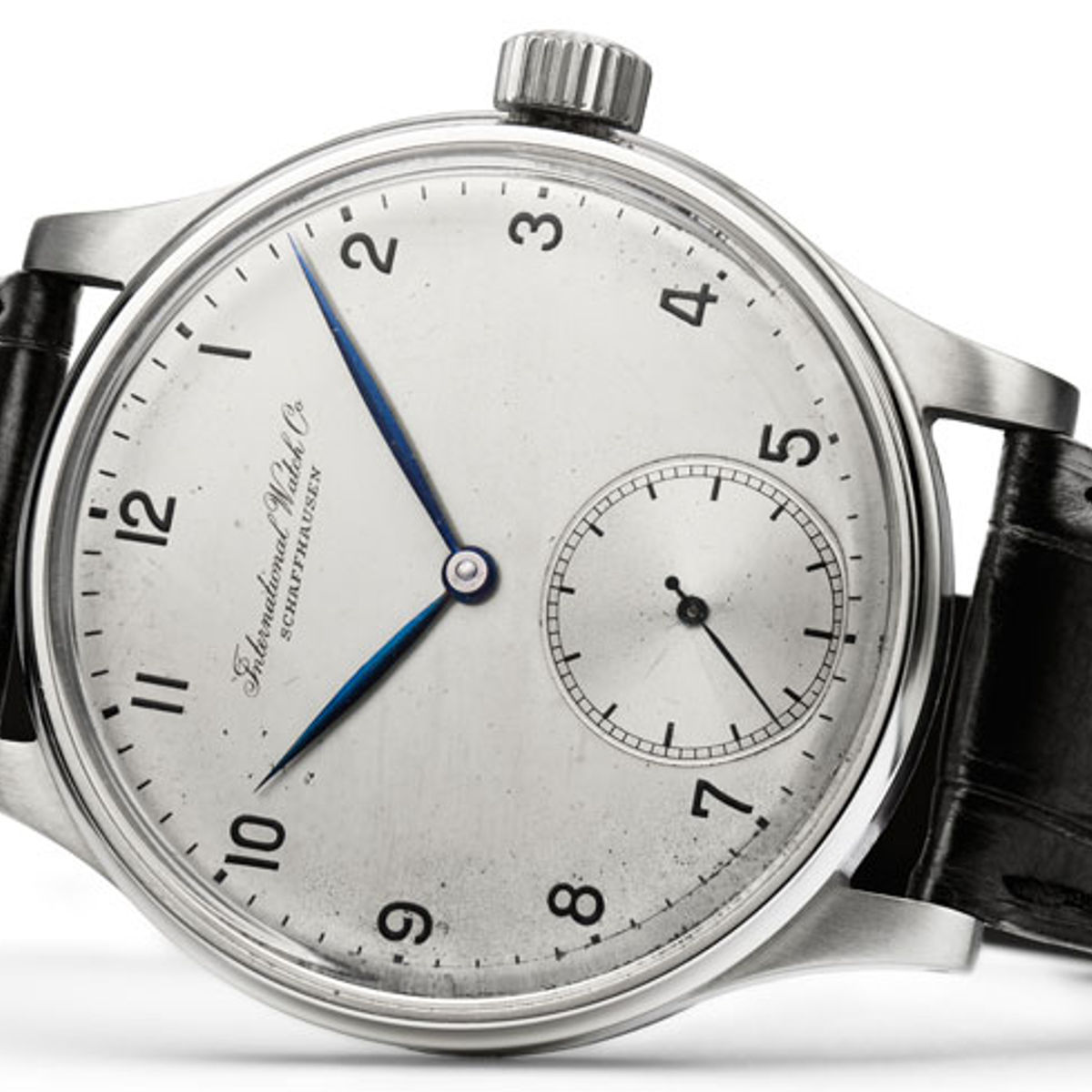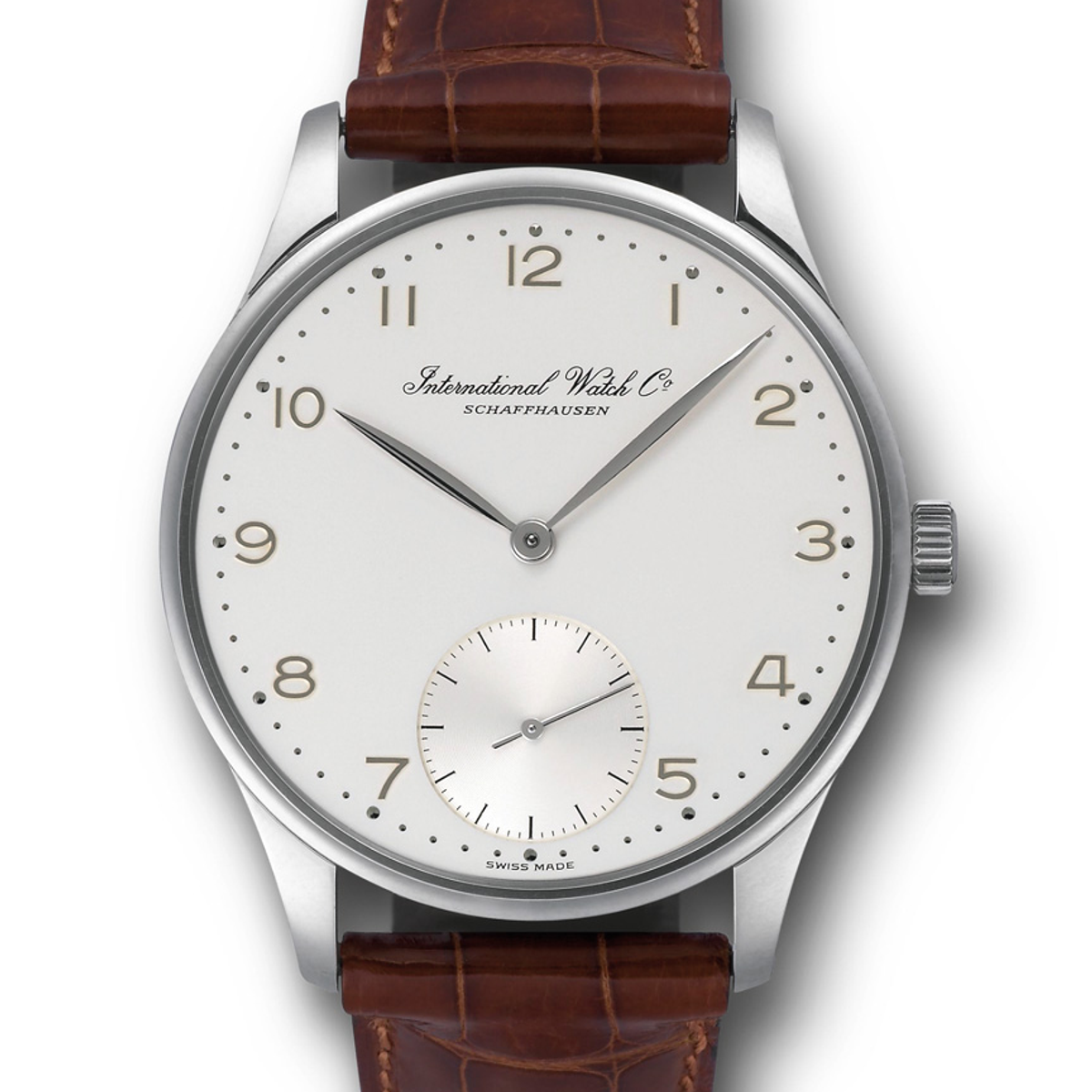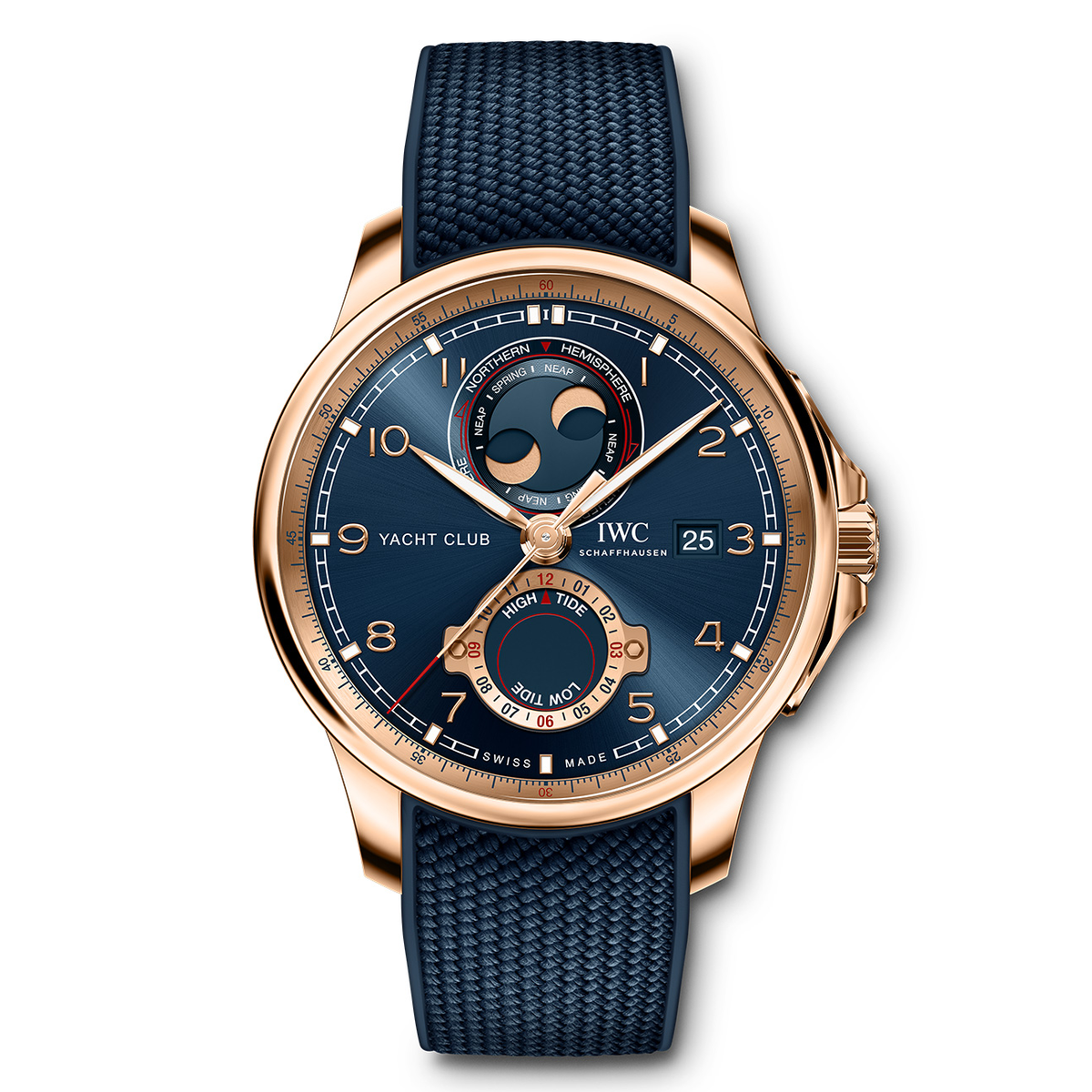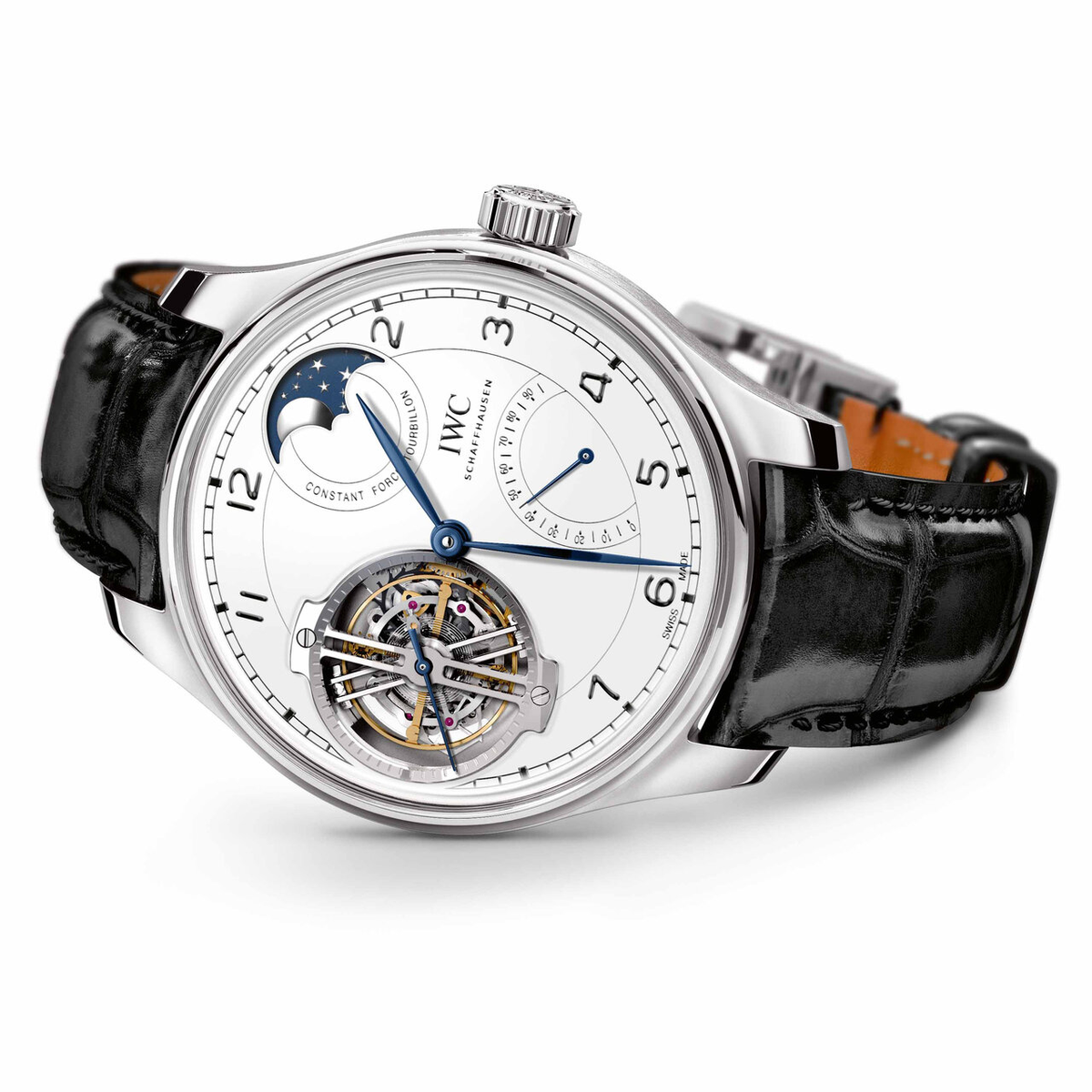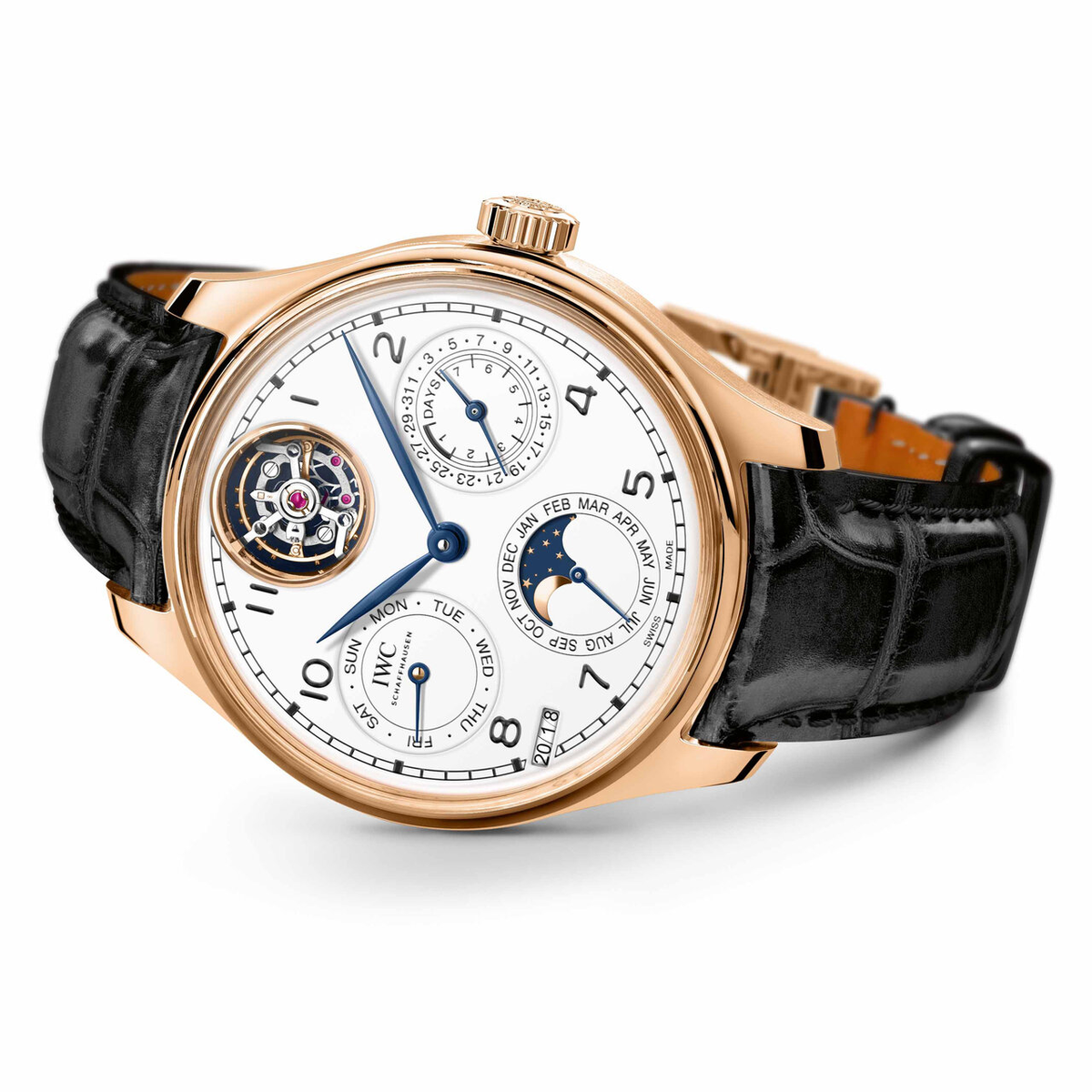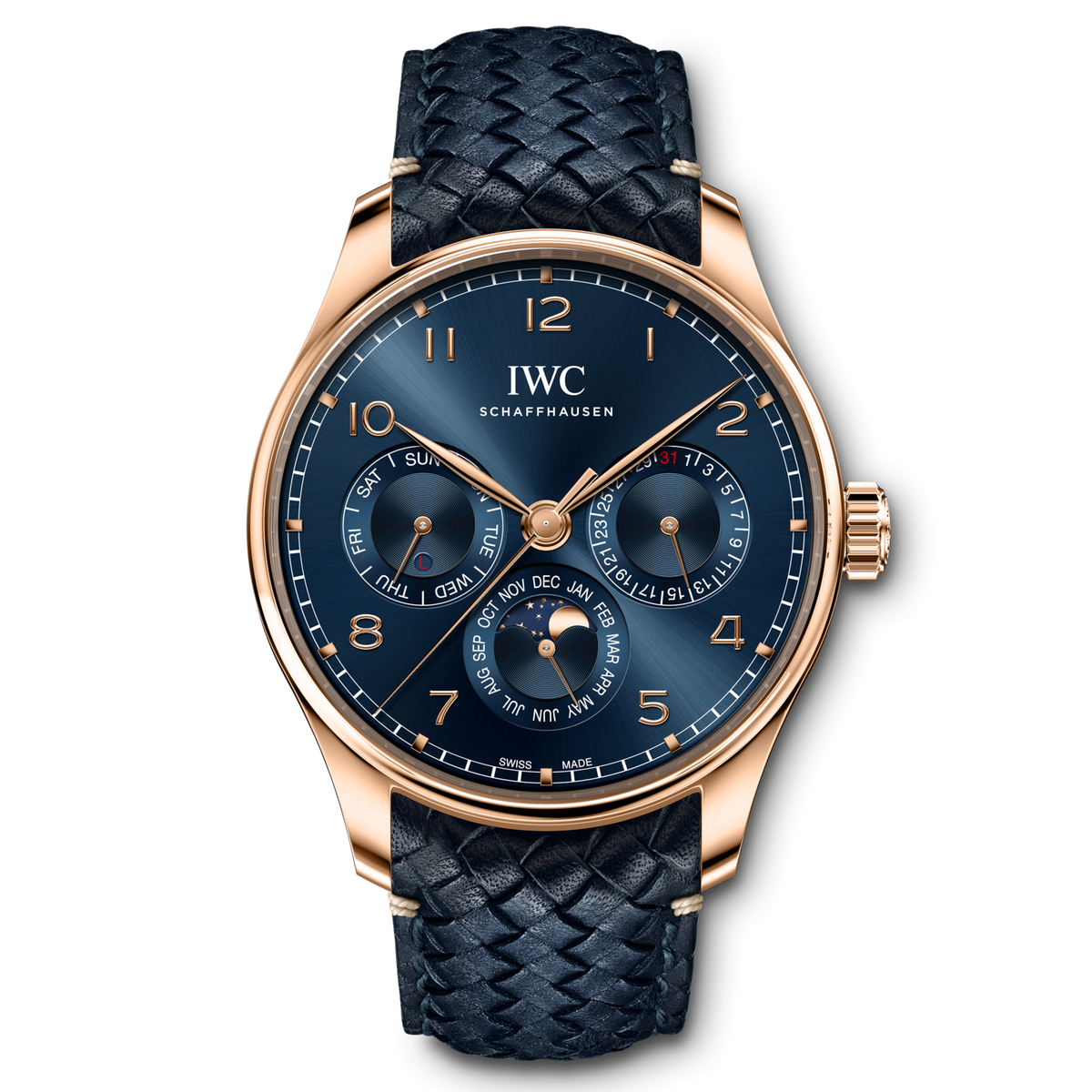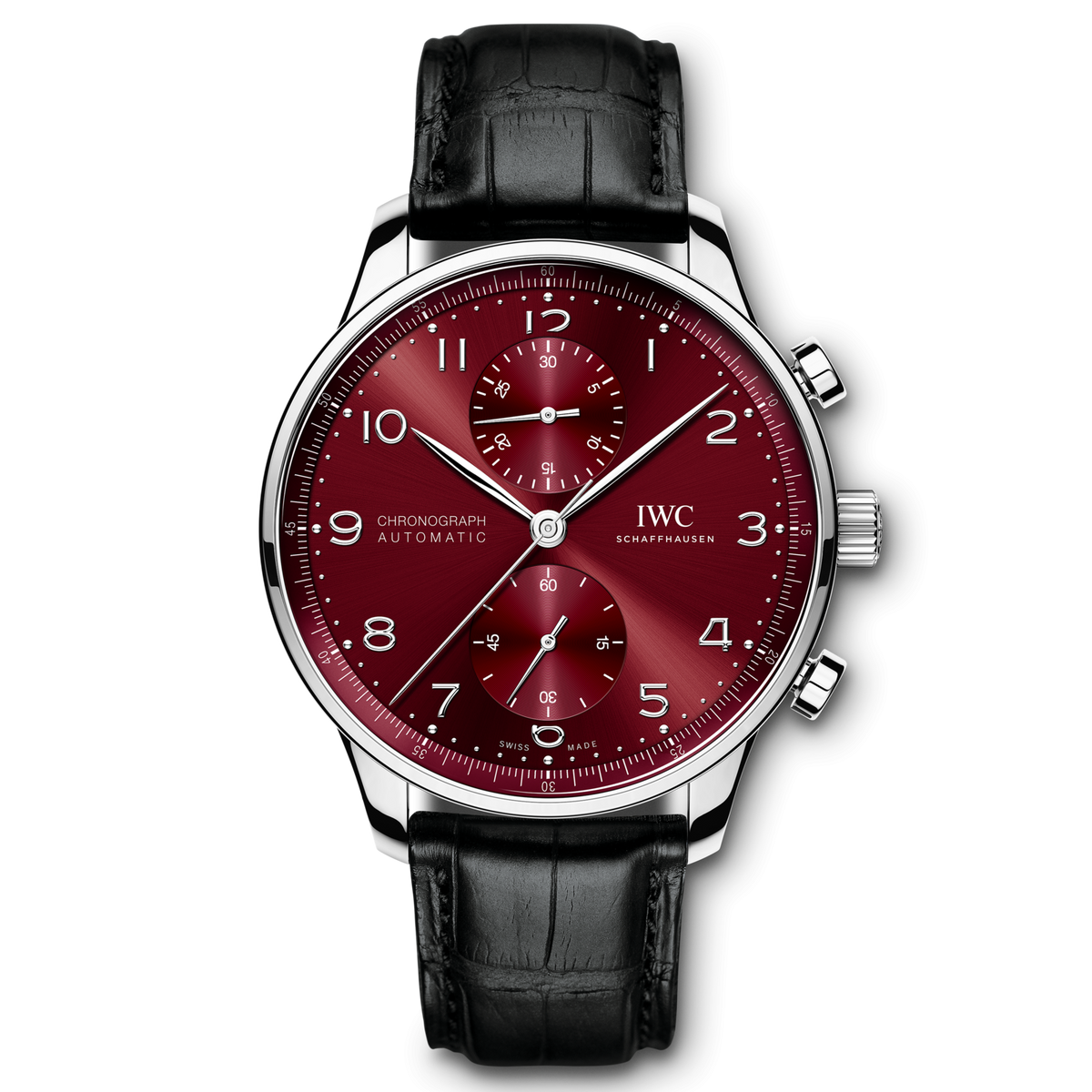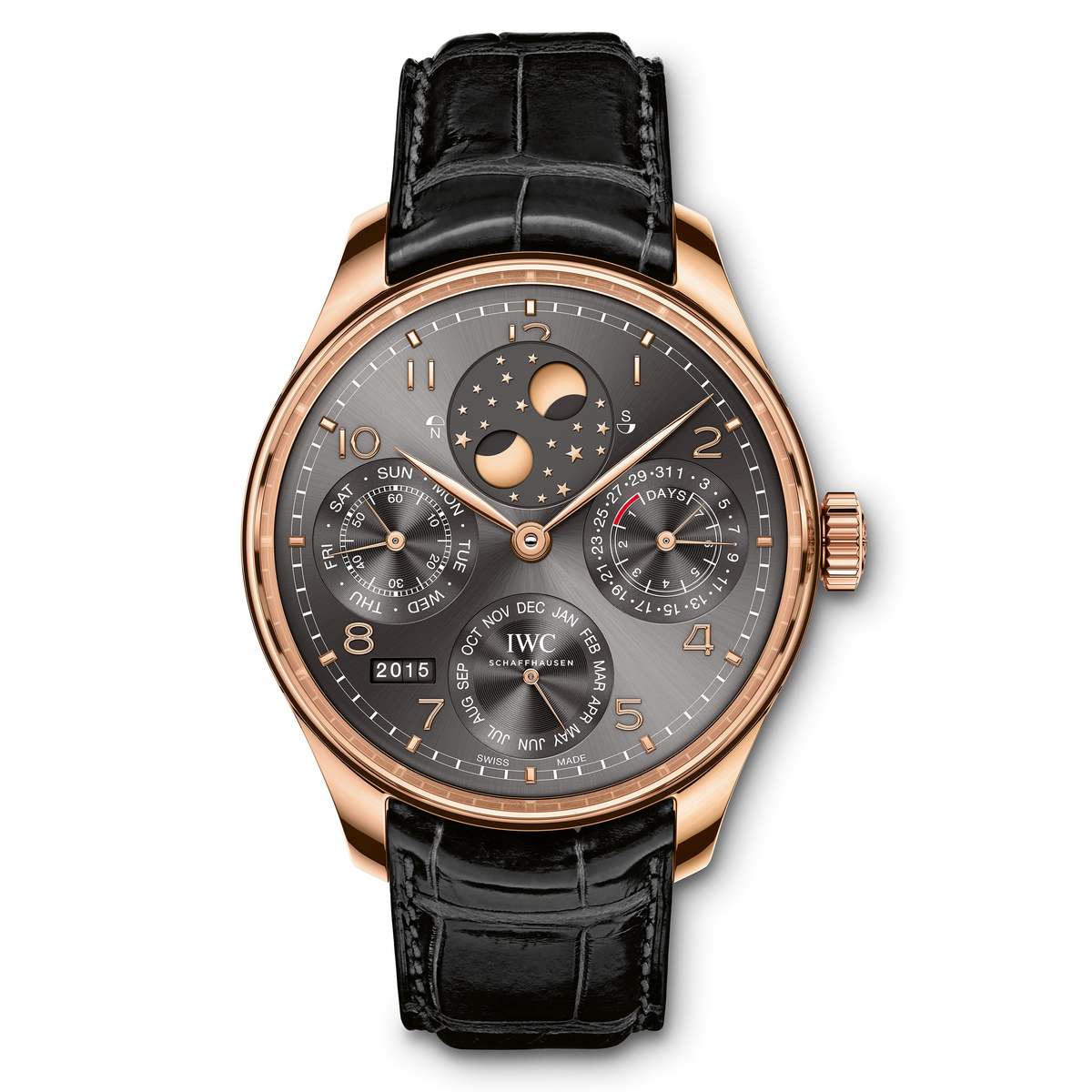The first Portugieser watch had a 43mm diameter, which was exceptionally large at a time when small Art Deco watches were plentiful.
Launch Year
1939
Functions
hours, minutes, small seconds
Movement
mechanical manual-winding
Distinctive features
extremely large 43mm-diameter steel case
Among IWC's emblematic collections, the Portugieser stands out for its precision, timeless character and large dimensions. At the time of its creation, in 1939, this watch first and foremost distinguished itself by its extraordinary 43mm diameter.
The story goes that the Portugieser came about in response to a request from two Portuguese watch dealers. The latter had travelled to Schaffhausen to order from IWC – still known at the time as the International Watch Company – a wristwatch guaranteeing the same precision as a marine chronometer.
This was a daunting challenge and, in order to meet it, IWC watchmakers studied the ingenious idea of adapting a pocket watch calibre to a wristwatch case. They chose an existing movement, the hunter-type Calibre 74, which had the advantage of having its winding stem at 3 o'clock. This implied creating a case that would be large enough to accommodate this mechanical movement. As a result, the first Portugieser watch had a 43mm diameter, which was exceptionally large at a time when small Art Deco watches were plentiful. In addition to this characteristic feature, the Portugieser watch boasted a classic design, distinguished by a refined dial highlighted by a slim bezel, elegant Arabic numerals, sage leaf hands and a railway-type minutes track.
Portugieser watches were produced in large numbers during the 1970s and 1980s but were not as successful as anticipated, prompting IWC to focus its attention on other models. It was not until 1993 that the watchmaker Kurt Klaus brought the Portugieser back to life on the occasion of the Manufacture’s 125th anniversary, when a Jubilee limited edition was launched. The diameter was slightly narrowed to 42mm, but the essential attributes of the original, such as the refined dial, the thin bezel and the sage leaf hands, were intact. This was also the first Portugieser to feature a transparent caseback. Over time, the Portugieser would expand through a collection enriched with various horological complications. Perpetual calendar, minute repeater, split-seconds chronograph or automatic chronograph models appeal to both connoisseurs and collectors.
The 150th anniversary of IWC in 2018 once again put the Portugieser in the spotlight with a Jubilee collection that welcomed complications associated in a novel way, such as a constant-force tourbillon and a perpetual calendar tourbillon. Simpler models displaying hours, minutes and small seconds, equipped with a manual-winding eight-day movement, also made their appearance, entirely in tune with the aesthetic codes of the original. IWC made 2020 the “year of the Portugieser” with the addition of a chronograph on an integrated steel bracelet, the first in the range, or with coloured dials in a 41mm size. Complications-wise, the collection extended to a Tourbillon Flyback Chronograph with retrograde date, a Perpetual Calendar powered by a new movement (Calibre 82650) and a Yacht Club Moon & Tide with a tide indication and the rare distinction of a perpetual moon phase for both hemispheres.
Key Characteristics
- 43mm-diameter wristwatch, equipped with a hunter-type movement and created in 1939 for two Portuguese watch dealers
